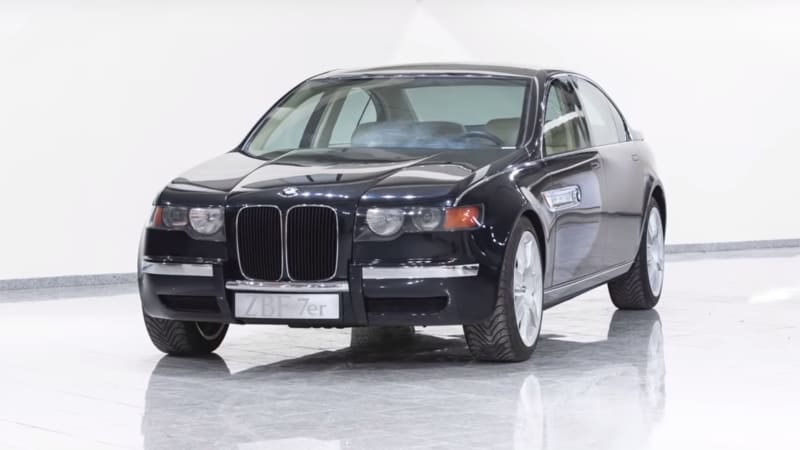
BMW has inducted another concept car into its official collection of historic cars. The ZBF-7er was a design study created in the mid-’90s to hone the idea of what a 7 Series should be. It features several elements that are far ahead of their time, as the accompanying video shows.
The video interviews longtime BMW designer Joji Nagashima, a 30-plus-year veteran of BMW design, who designed the ZBF-7er in addition to the iconic E36 3 Series, original Z3 roadster, E39 5 Series and others. As Nagashima explains, ZBF stands for “Zukunft BMW Familie” or “Future BMW Family.” At the time, the team was trying to establish the 3, 5 and 7 Series as the brand’s core family of vehicles.
While those days may seem long gone, the Siebener (7er in German) concept still predicted quite a few characteristics that have appeared on BMW vehicles since. Perhaps the most noticeable trait is the giant kidney grille, a huge departure from the slim nostrils on the E38 that the ZBF would have replaced. Of course, the elongated openings are tame compared to the controversial ones of the new M3/M4, but we suspect they would’ve been quite shocking if they’d debuted in 2002.
The ZBF-7er is a large car. It’s so big, Nagashima says, that they couldn’t find production tires to fit onto the concept. At the time 19-inch wheels were the maximum, so BMW had to ask Dunlop to create custom 20-inch tires with hand-cut treads of Nagashima’s own design.
The size, which is described as bigger than an E38, also meant that the side profile’s visual mass had to be broken up. Because Nagashima chose to eschew the flame surfacing lines and curves pioneered by BMW’s Chris Bangle, the vertical panel of the door is broken up by a gigantic chrome side scuttle.
The interior looks dated today, but there are some interesting shapes on the dashboard, and materials for a long center console that extends between the rear seats. The wooden door armrests and center stack almost look mid-century. Notably, there are cameras in lieu of side mirrors some 25 years before they began appearing on production cars. There’s also an early version of BMW’s iDrive system, but controlled from the rear seats.
Nagashima also reveals something interesting about the fully drivable concept’s construction. Rather than some painted composite, the body is completely hand-made of metal. Even back when the ZBF-7er was built, this was already a dying art. However, Nagashima says the art still exists in Italy. So, BMW built a full-size clay model and shipped it to the Italian coachbuilders to hammer the body out of aluminum — by hand. “I thought it was great,” Nagahima recalls. “Such a futuristic concept car done in a method which was very old and traditional.”
As history has shown, the ZBF-7er never made it to production as a successor to the E38. Instead, the world was introduced to Bangle’s bustle-butt E65. Both were a huge departure from the E38, and the glimpse of this other possibility makes us wonder how BMWs would have evolved if the powers that be had chosen the path not taken. Then again, the entire idea of the 3/5/7 Series being BMW’s core family has been tossed out the window, so perhaps it’s moot.
Related video:
